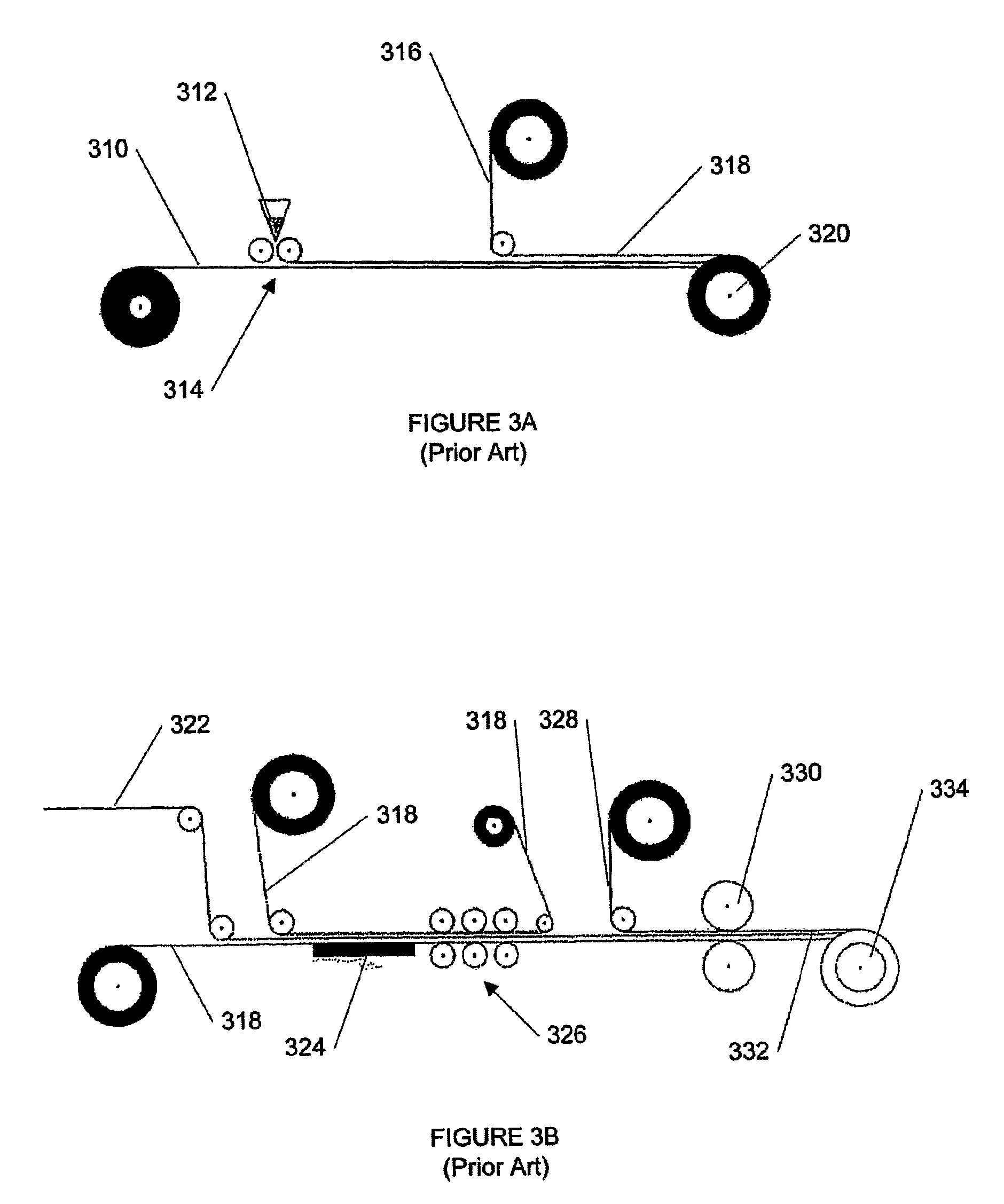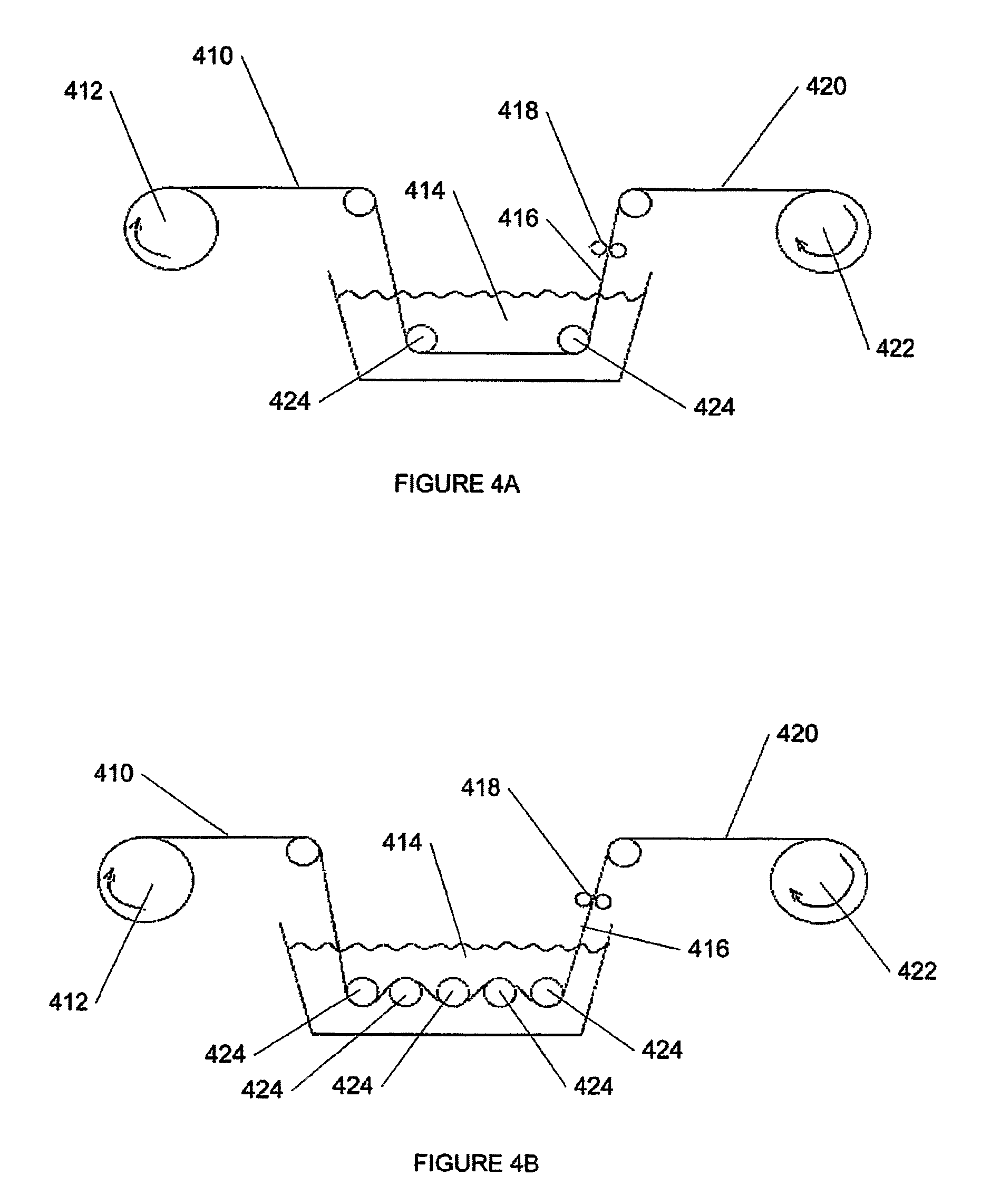Linerless prepregs, composite articles therefrom, and related methods
a technology of prepregs and composite articles, applied in the direction of surface layering apparatus, manufacturing tools, applications, etc., can solve the problems of manufacturing defects and resin voids, and achieve the effect of convenient wounding into a roll or stacking
- Summary
- Abstract
- Description
- Claims
- Application Information
AI Technical Summary
Benefits of technology
Problems solved by technology
Method used
Image
Examples
example 1
[0073]A resin system was prepared by mixing 100 parts by weight EPON 863 (an epoxy resin available from Resolution Performance Products of Houston, Tex.) as an initial resin, 22 parts by weight ANCAMINE 2441 (an amine curative available from Air Products and Chemicals, Inc. of Allentown, Pa.), and 5 parts by weight CABO-SIL TS-720 (a fumed silica available from Cabot Corporation of Billerica, Mass.). This composition was impregnated by hand into a 3K carbon fiber weave to form a linerless prepreg according to the present invention.
[0074]Two layers of the linerless prepreg were stacked together. A pressure of 1.7 Pa (0.25 psi) was applied to the stacked layers of prepreg for 15 hours, which was intended to approximate the pressure that the prepreg assembly might experience if wound onto itself.
[0075]The amount of force required to separate the layers of prepreg from one another thereafter was measured using a peel tester available from IMASS, Inc. of Accord, Mass. under the trade des...
examples 2-4
[0082]The following examples were prepared using relatively high viscosity initial resins and a solvent for reduction of the resin's viscosity to a point suitable for impregnation. However, as compared to the similar compositions of Comparative Examples C1-C3, a viscosity modifier was added to each resin system. Each resin system was impregnated by hand into a 3K carbon fiber weave to form a prepreg. Prior to stacking, each prepreg was air-dried at room temperature until only a residual amount of acetone remained in the prepreg. Then, without use of any release liners therebetween, two layers of the prepreg were stacked together. A pressure of 1.7 Pa (0.25 psi) was applied to the stacked layers of prepreg for 15 hours, which was intended to approximate the pressure that the prepreg assembly might experience if wound onto itself.
[0083]The amount of force required to separate the layers of prepreg from one another thereafter was measured using a peel tester available from IMASS, Inc. ...
example 5
[0088]A resin composition was prepared by mixing 100 parts by weight EPON 862 (an epoxy resin available from Resolution Performance Products of Houston, Tex.), 22 parts by weight ANCAMINE 2441 (an amine curative available from Air Products and Chemicals, Inc. of Allentown, Pa.), and 5 parts by weight CABO-SIL TS-720 (a fumed silica available from Cabot Corporation of Billerica, Mass.). This composition can be impregnated into a reinforcing material to form a linerless prepreg according to the present invention.
PUM
| Property | Measurement | Unit |
|---|---|---|
| viscosity | aaaaa | aaaaa |
| viscosity | aaaaa | aaaaa |
| viscosity | aaaaa | aaaaa |
Abstract
Description
Claims
Application Information
 Login to View More
Login to View More - R&D
- Intellectual Property
- Life Sciences
- Materials
- Tech Scout
- Unparalleled Data Quality
- Higher Quality Content
- 60% Fewer Hallucinations
Browse by: Latest US Patents, China's latest patents, Technical Efficacy Thesaurus, Application Domain, Technology Topic, Popular Technical Reports.
© 2025 PatSnap. All rights reserved.Legal|Privacy policy|Modern Slavery Act Transparency Statement|Sitemap|About US| Contact US: help@patsnap.com



